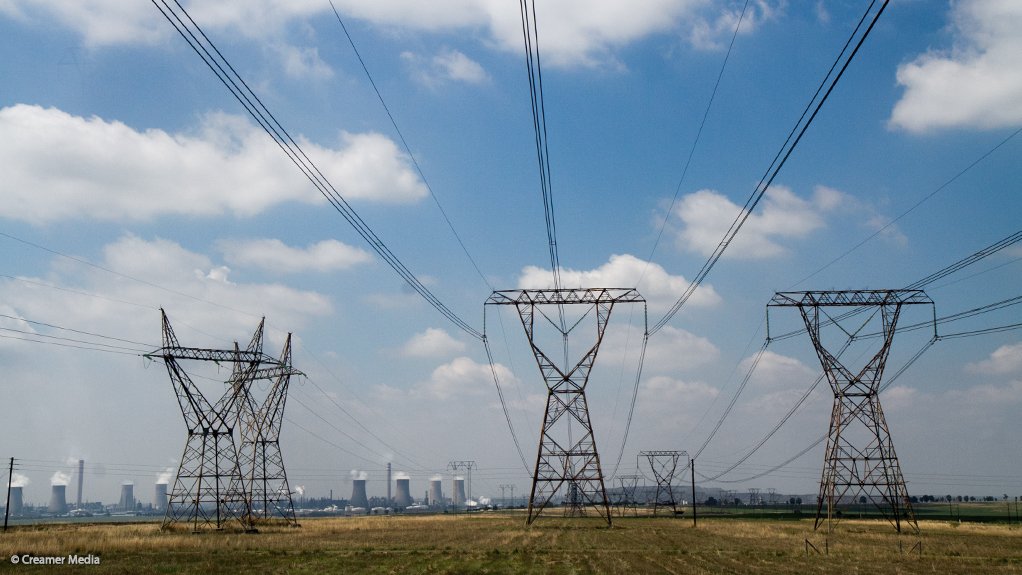Chemicals and fuels group Sasol has issued a request for information (RFI) for the supply of 600 MW of renewable energy to its South African operations so as to reduce its yearly greenhouse gas (GHG) emissions by about 1.6-million tons.
The closing date for submissions is Friday, June 5.
The JSE-listed company, whose Secunda facility, in Mpumalanga, is considered to be one of the largest single-site carbon emitters globally, said the purpose of the RFI process was to identify independent power producer (IPP) partners able to deploy renewables projects that could supply electricity to its South African operations under power purchase agreements (PPAs).
The projects must show a generation capacity of at least 20 MW to be implemented either as wheeled options from suitable locations across South Africa, or as embedded options close to Sasol’s facilities in Secunda or Sasolburg, in the Free State.
In aligning with South Africa’s Integrated Resource Plan 2019 (IRP 2019), which anticipates that renewable generators will be the primary source of new generation added to the country’s coal-heavy mix between 2020 and 2030, Sasol indicated that wind and solar photovoltaic (PV) technologies would be favoured at this stage.
In February, Sasol CEO Fleetwood Grobler said that the group had made a submission to the Department of Mineral Resources and Energy (DMRE) in line with the department’s own RFI for possible emergency electricity solutions that could be “grid-connected in the shortest time at the least possible cost”.
The RFI closed at the end of January and the DMRE confirmed that 481 responses had been received before Minister Gwede Mantashe submitted two separate Ministerial determinations to the National Energy Regulator of South Africa (Nersa) for its concurrence ahead of the initiation of procurement programmes, as required under Section 34 of the Electricity Regulation Act.
On March 18, and ahead of South Africa’s Covid-19 lockdown, Nersa indicated that it would make a determination on the first determination, relating to emergency power, within three months, but would hold public hearings on the second, which related to the technologies listed in the IRP 2019.
Nersa subsequently curtailed operations in line with the lockdown and it is unclear whether the deadlines will still be met.
Grobler told Engineering News in the February interview that Sasol’s submission outlined a proposal for increasing self-generation across its South African production locations, which could reduce its demand and free-up capacity for Eskom to supply other households and businesses.
Overall, Sasol’s operations in Secunda and Sasolburg required 1 200 MW of electricity. Sasol already generated 600 MW of that internally and Grobler indicated that it had plans that could make it entirely self-sufficient.
Sasol’s plans, Grobler confirmed, included the development of wind and solar PV generators adjacent to either its Secunda or Sasolburg complexes, as well as entering into multidecade PPAs with IPPs.
“This will favourably position Sasol to deliver on our commitment of reducing our South African GHG emissions by at least 10% by 2030,” chief sustainability officer Hermann Wenhold said in a statement.
In October, Sasol released its inaugural Climate Change Report where it committed to reduce its absolute GHG emissions from the South African operations by at least 10% by 2030, off a 2017 baseline. The company has identified renewable energy as a key lever for reducing its GHG emissions and moving it towards producing products in a more sustainable manner.
Sasol said that interested bidders could apply for access to the RFI by forwarding their company profile together with contact details to renewable.energy@sasol.com.
EMAIL THIS ARTICLE SAVE THIS ARTICLE ARTICLE ENQUIRY
To subscribe email subscriptions@creamermedia.co.za or click here
To advertise email advertising@creamermedia.co.za or click here











